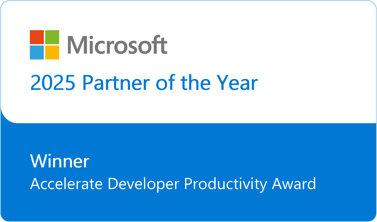If Part 1 made the case for why modernization is essential, Part 2 is about how to make it happen—efficiently, reliably, and at scale. The answer lies in automation. Without it, migration is a manual slog. With it, you unlock speed, accuracy, and confidence.
From Inventory to Insight: Automating Discovery
Imagine you’re tasked with migrating 1,500 repositories from Bitbucket and GitLab to GitHub Enterprise. Where do you start? Which repos are active? Which contain large binaries? Which pipelines are too complex to port as-is?
Elevate automates this discovery phase. It scans your entire source control management (SCM) landscape and builds a detailed inventory. For example, it can flag:
- Repos with no commits in the last 12 months (likely candidates for archiving)
- Pipelines with unsupported tasks or custom scripts
- Repos with large files that exceed GitHub’s limits
This automated insight replaces weeks of manual auditing with a clear, actionable report.
Planning with Precision: Dry-Runs and Scheduling
Once you know what you’re dealing with, the next step is planning. But planning isn’t just about setting dates—it’s about understanding effort and risk.
Elevate enables automated dry-runs that simulate the migration process. These dry-runs:
- Estimate how long each repo will take to migrate
- Identify blockers like permission mismatches or missing metadata
- Generate statistics to help you prioritize and batch migrations
For example, one enterprise used Elevate to group repos by business unit and assign each a migration window. Teams could see their deadlines, track progress, and self-serve their way through the process—without waiting on central IT.
Automating the Migration Itself
When it’s time to move, Elevate doesn’t just hand you a checklist—it executes. It automates:
- Large file mitigation (e.g., rewriting history or using Git LFS)
- User and team permission mapping
- Repo creation and metadata transfer
- Pipeline migration, including secrets and environment variables
Let’s say you have a repo with 27 secrets, 14 pipeline steps, and 4 custom scripts. Elevate audits the pipeline, flags unsupported tasks, and helps you rewrite or replace them. It even tracks the last successful run and migration complexity score.
Visibility and Control at Every Step
Automation doesn’t mean losing control. Elevate provides dashboards that show:
- Migration status by repo, team, or organization
- Compliance scores across GitHub WAF categories
- Deployment frequency, PR cycle time, and batch size
This visibility helps engineering leaders make informed decisions. For example, if a team is falling behind on its migration plan, you can intervene early—before it impacts delivery timelines.
Real-World Impact
Organizations that adopt Elevate’s automation-first approach report:
- 60% reduction in migration time
- 80% fewer manual errors
- Higher confidence from stakeholders and leadership
One global retailer used Elevate to migrate over 2,000 repos in under 90 days—without disrupting a single production deployment.
In Part 3, we’ll explore how Elevate helps enforce governance and best practices at scale using GitHub WAF.
BACK:
Part 1: The Case for Migration — Why Legacy Repos Hold You Back
NEXT
Part 3: Governance and Compliance at Scale — GitHub WAF in Action










